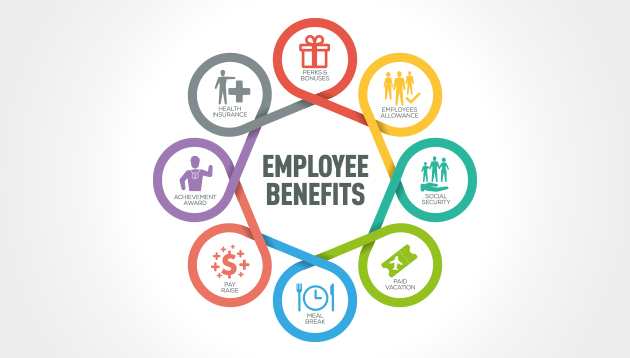The workforce has been going through tremendous change as of recently. In 2014, 36 percent of the U.S. workforce were millennials and by 2020, nearly half (46 percent) of all U.S. workers will be Millennials (Lynch, 2008). By comparison, the generation before them, Generation X (or Gen Xers), represent only 16 percent of today’s workforce. With that being said, we all know that with a newer workforce comes different priorities and needs in terms of their health benefits selections. Organizations have optimized the effectiveness of their benefits programs by shifting the strategy from “What best suits this organization” to asking, “What do my employees truly WANT” in terms of benefits offerings. With the growing number of millennials in the workforce, it becomes a necessity to evolve your benefits strategies to best engage these workers. Organizations must continuously ask: What exactly do millennials want from our benefits? And how do they go about deciding which benefits to choose?
Despite a reputation for being well-educated and tech-savvy, research shows that millennials have low participation rates in employee benefits and are less likely to know about their employers’ benefits compared to other age groups. Instead, we have seen them prioritizing out of necessity, and affordability. Their selection process has trended in many disrupting ways.
How millennials select benefits
When it comes to the benefits enrollment process, millennials take a meticulous approach. In fact, millennials review every single one of their benefit options to see what is available to them. As they review their options, millennials carefully evaluate need and cost, and they “read the fine print.”
Millennials evaluate available benefits using a three-step process:
• “What essential benefits do I need?” Millennials talk about prioritizing medical benefits over everything else, followed closely by
dental benefits.
• “Of the remaining non-essential options, which ones am I interested in?” Millennials want benefits that feel personalized and
useful.
• “Based on my budget, which of these benefits that I want can I afford?” Millennials are more cost-conscious than other
generations when it comes to benefits. While 50 percent of millennials consider their budget when selecting benefits, only 42
percent of older generations do.
Shift In Communications Methods
Rise of Mobile
Millennials certainly like their mobile devices — 77 % own a smartphone. In addition, this age group accounts for 41% of the total time that all Americans spend using smartphones. In order to communicate with millennials, it must be done in a way that will make the most impact, capture their attention spans and stand out among competing information. Open enrollment and year-round benefits should be no different. Because millennials spend so much time on their smartphones, their benefits education and enrollment process should be provided on these devices, in a format that’s simple and familiar to them. In fact, we are seeing a rising climb of mobile views vs desktop. According to SimilarWeb’s State of Mobile Web US 2015 report, roughly 56 percent of consumer traffic to the leading US websites is now from mobile devices.
Social Media and Digital Marketing
It’s important to go beyond face-to-face benefits meetings and paper-based communications, as millennials consume information differently than previous generations — they are accustomed to being fed bite-sized pieces of information. Aim to work open enrollment information into their daily news feed, sharing information that’s easily accessed from their phones, where they can quickly scan and click embedded links to a site where they can take action. By capturing their attention via emails, ad tiles, banners and videos, you can creatively communicate how the benefits work, how to enroll and how employees can save money by taking advantage of offerings like commuter benefits.
Trends in Education Strategy
Focus on Impact and the actual “Benefits”
Rather than giving an all-encompassing overview of every potential benefit offered to employees, HR leaders should highlight those that make the most sense for millennials and provide information in bite-size portions. It’s also important to be transparent about true costs. Millennials tend to be reluctant to enroll if they are unsure about how the benefits work, how they save and their out-of-pocket costs. Benefits communications should include real-life savings examples that allow millennials to better understand how pre-tax contributions can lead to significant annual savings and potential savings for retirement if HSAs are offered. For example, outlining to employees how an employee making an annual salary of $60,000 can take home $2,025 in tax savings by contributing the maximum amount to an HSA when paired with a high-deductible health plan, may peak their interest.
Shift to Private Exchanges
Not all change is cost-effective for all employers. Moving benefit selections to exchanges may be a good solution and is becoming increasingly more common among employers with large Millennial populations. There is, in fact, quite a difference between those companies who have added the option to enroll for benefits through an Exchange — 10% between those with high vs. low presence of Millennials. Those companies with higher populations of Millennials also plan to move more employees to exchanges in the next two to three years.
Millennials are now the most common age group represented by companies. As the numbers continue to grow, employers must evolve their benefits approach to match not only the needs of the existing workforce but the growing needs for them as well. Attitudes and behaviors can vary drastically among this generation and it is important for employers, brokers and enrollment firms to keep this in mind as they look to build benefit strategies to attract and retain talent. Helping younger millennials understand and appreciate benefits relevant to their career and life stage is as important as providing older Millennial with benefits and tools they can adapt to their own lifechanging events. Proper communications and education are proving to be the most effective in helping them engage with their benefits. Bringing in benefits counselors to guide your organizations efforts in your enrollments will help cover all of these basis for a successful and effective next enrollment.
